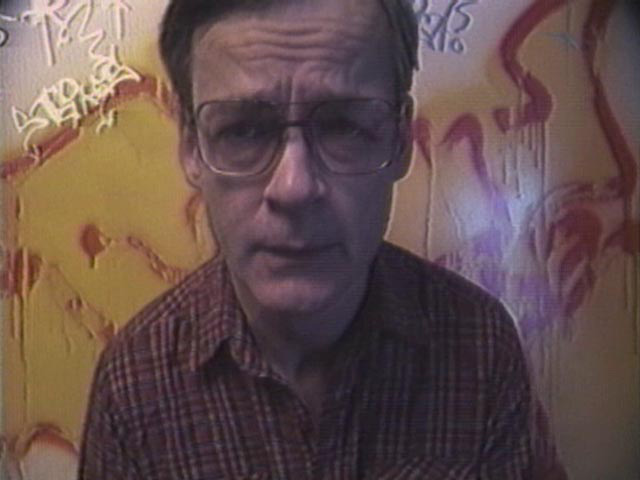Tony Conrad
Biography
Spanning six decades, Tony Conrad’s prodigious career roamed across a boundless array of disciplines and roles, including visual artist, filmmaker, violinist, composer, cable access activist, and professor. He made major contributions in the emergent fields of minimal music composition and structural film in the 1960s, and then carried his pioneering work into the realm of rock and drone music, video and performance art, and cable access television. Influencing the development of multiple artistic movements as both a collaborator and outside agitator, Conrad evaded any singular classification, and yet had a profound influence on his contemporaries and subsequent generations.
Receiving a degree in mathematics from Harvard University in 1962, Conrad relocated to New York City and immediately served as a node connecting many of the principals of post-Cagean composition—including La Monte Young, Henry Flynt, and Christian Wolff—with the emerging underground film scene epitomized by his apartment mate and collaborator Jack Smith. Exploring the limits of each medium he approached, Conrad burrowed into the structures of moving image and sound. In 1965, he premiered The Flicker, a mathematically-determined stroboscopic film that alternated black and white frames, which became a touchstone of the New York underground. Throughout the decade, Conrad was a member of a loose collective of performers known alternatively as the Theatre of Eternal Music and the Dream Syndicate, which included La Monte Young, Marian Zazeela, and John Cale (later of the Velvet Underground).
In 1974, Conrad began a teaching position at Antioch College, where he first began to experiment with video and first crossed paths with Paul Sharits, who would become a key interlocutor for both of their respective careers. Conrad soon relocated to Buffalo, New York, where he joined the Department of Media Study and became part of a network of local artists, filmmakers, and performers, including Sharits, Hollis Frampton, Steina and Woody Vasulka, Cathy Steffan, Gerald O’Grady, and Julie Zando. During his time in Buffalo, where he would live and work until his death, Conrad was a fierce champion of collaborative and community-run organizations, including Hallwalls Contemporary Arts Center, Squeaky Wheel/Buffalo Media Resources, the city’s public access television station, the 8mm News Collective, and a number of other grassroots arts and activist groups. In 1990, Conrad organized a compilation of his videos intended for public viewing titled Authorized to Surrender, featuring videos created between 1977 and 1990 and first presented during his 1991 solo retrospective at The Kitchen. These videos were initially disseminated in one-off screenings and on public access television, and also represented a single compendium intended for later distribution.
Tony Conrad was born in 1940 in Concord, New Hampshire. Selected solo exhibitions include the Institute of Contemporary Art, Philadelphia (2019); MIT List Visual Arts Center and the Carpenter Center for the Visual Arts at Harvard University, Cambridge (2018); Albright-Knox Art Gallery, Buffalo and University of Buffalo Art Gallery, Buffalo (2018); Greene Naftali, New York (2016); Kunsthalle Wien, Austria (2014); Museo d'Arte Contemporanea, Villa Croce, Genoa (2013); Greene Naftali, New York (2013); and The Kitchen, New York (1973). His work is in the collections of the Walker Art Center, Minneapolis; Museum of Contemporary Art, Chicago; Los Angeles Museum of Contemporary Art, Los Angeles; Museum für Moderne Kunst, Frankfurt, Germany; and the Whitney Museum of American Art, New York. Conrad lived and worked in Buffalo, New York until his death in 2016.
